In common with any group of like-minded people the world over, audiophiles use terms which the casual observer may find hard to understand. So, here for you, is a handy reference guide. If you will, a glossary of turntable terminology.
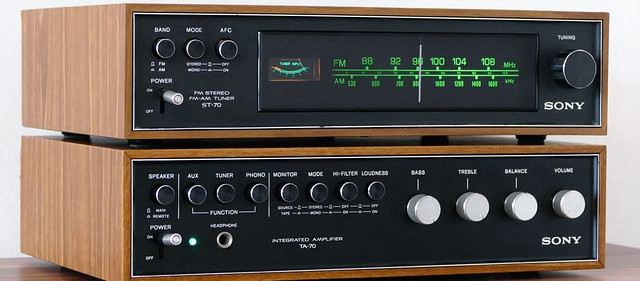
Audiophile:
Someone who is serious about high-fidelity sound reproduction.
High-fidelity:
The high-quality reproduction of sound.
Turntable:
Often confused with the term record player of which it is a constituent part. However, the terms are often used interchangeably. Strictly speaking, a turntable consists of a rotating platter which the record sits on, and an arm which houses a cartridge and stylus (or needle).
Manual turntable:
As the name suggests, apart from spinning the record a manual turntable requires user input to place the stylus on the record at the start of playing and remove it at the end.
Cartridge:
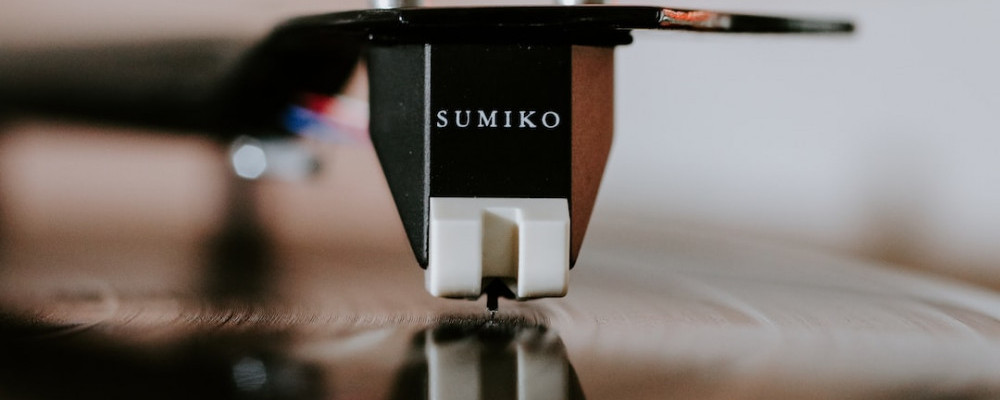
The mechanism which holds the stylus. Cartridges can be moving magnet (MM) or moving coil (MC).
Moving Coil Cartridge (MCC):
A coil is attached to the stylus by a cantilever arm. As the stylus moves, the coil moves between two magnets. This affects the electrical signal which is sent to the pre-amp or stereo receiver before being output as sound by the speakers.
The stylus with an MCC cannot be replaced. If you need to replace it, you will need to buy a whole new cartridge.
Moving Magnet Cartridge (MMC):
A magnet is attached to the opposite end of a tarm to the stylus. As the stylus moves, the magnet moves between two coils, therefore affecting the electrical signal which is sent to the pre-amp or stereo receiver before being output as sound by the speakers.
Stylus:
Often referred to as a needle, the stylus comes into contact with the record. It sits in the groove and effectively reads the record. The vibration of the stylus is converted into an electrical signal by the coils and magnets within the cartridge. Styluses come in three basic types.
Circular stylus:
Cheap but doesn’t track the groove to a high degree of accuracy. The resulting sound quality is not as good.
Elliptical stylus:
More expensive but makes a better fit with the groove therefore doing a better job of recreating the sound recorded on the record.
Fine line stylus:
The most sensitive stylus, its thin, polished tip makes excellent contact with the record. The sound quality is excellent.
Headshell:
Attaching the phono cartridge to the tonearm of your turntable, the headshell is a vital piece of kit as it connects the electrical wires of the cartridge to the tonearm. The headshell is where the cartridge alignment is calibrated. For the audiophile, small differences make huge differences, so the better it is the better the sound reproduction.
Tonearm:
Holds the headshell and hence cartridge and stylus. The tonearm keeps the stylus steady as the record spins and also allows the stylus to follow the groove from the outside edge to the middle of the record.
Armrest:
The tonearm sits on here when the turntable is not in use.
Platter:
The flat spinning surface upon which the record sits and spins to facilitate playback. Platters play an important role in spinning the disc at a consistent rate and preventing unwanted vibrations from reaching the stylus.
The platter is rotated by a motor. There are three methods for attaching the motor to the platter.
Direct drive:
The motor is connected directly to the platter. It has a higher torque than a belt-drive model, which means that the turntable reaches the desired speed more quickly and reduces interference from the stylus or the DJ. It is the preferred type of turntable for vinyl DJs.
Belt drive:
In this instance, the motor is connected to the platter by an elastic belt. This is the drive belt.
Pros: This system allows the turntable to be powered by a less powerful motor. An added benefit is that the drive belt acts as a damper to absorb mechanical vibrations that could be picked up by the stylus, affecting playback.
Cons: Playback is less accurate than a direct drive turntable. The drive belt can slip off the motor or platter spindle. Over time a new belt is likely to be required.
Idler wheel:
With an idler wheel turntable, the motor is coupled to the platter with a wheel (the idler wheel). This means that the platter gets up to speed more quickly than a belt-drive system would. It also has a higher torque than a belt-driven platter. Idler drive units waned in popularity as the popularity of belt-drive turntables increased.
Central spindle:
When placing the record on the platter make sure that it goes through the hole in the centre of your record.
45 rpm adaptor:
aka 45 rpm insert, 45 rpm spindle adapter, 7-inch adapter or spider:
In the earliest days of the 7-inch 45 rpm single, its inventor RCA Victor supplied a record changer upon which to play them.
To house the changer mechanism, the central spindle was much larger than the spindle on CBS’s LP record players. Hence when machines appeared that could play both 33⅓ rpm and 45 rpm records an adaptor was required to facilitate the playing of 45 rpm records.
Base:
As the name suggests, everything sits on the base. To help reduce unwanted vibrations, the heavier the better. Granite is as good as it gets.
Turntable mats:
These are usually made of felt, rubber, acrylic, cork or even leather. They sit on the platter underneath the record. Depending on the material used, turntable mats can reduce unwanted vibrations and static.
Slipmat:
A slipmat is a turntable mat usually made of felt. The idea is that friction between the platter and the record is reduced. They are often used by DJs to assist them in “scratching” or otherwise adjust rotation speeds.
Phono preamp (also known as phono-stage):
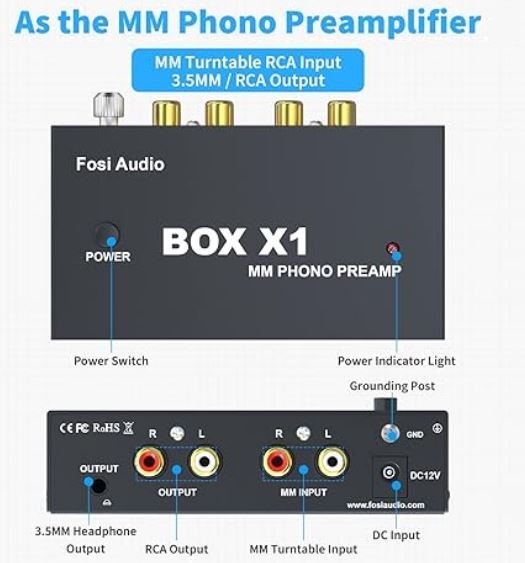
Most low- to mid-range turntables feature a built-in preamp. This piece of kit boosts the phono output level signal from your stylus to a line level signal before it is relayed to any stereo amplifier, powered speakers, Bluetooth speaker etc.
Some preamps are switchable meaning that you can opt to use an external preamp. This will facilitate better sound quality. To that end, higher spec. turntables do not generally feature a built-in preamp.
Grounding wire:
For turntables without a built-in preamp, a grounding wire is required to connect the external preamp to the turntable. This prevents an unwanted electrical humming noise.
Phono output:
The electrical signal produced by the turntable cartridge, i.e., directly from the movement of the stylus in the groove of the record. Depending upon whether your cartridge is MC or MM, the phono output varies from between 0.2 and 1.5 milliVolts for an MC cartridge to between 3 and 6 mV for an MM cartridge.
Line level:
(Consumer) Line level is the strength of the signal produced from your preamp. At approx. 0.3 Volts it is typically 60 times bigger than the phono output signal strength.
RIAA (Recording Industry Association of America) Equalization:
Lower frequency sounds (bass) have wider grooves on a record. So, to make the grooves narrower on a record, the bass is reduced, and the treble is boosted. Because of this, the phono output (from the cartridge) is lacking in bass but has too much treble. As well as boosting the signal strength from the phono output level to the line level, the preamp rectifies this problem.
Amplifier:
Amplifiers are used to connect your preamp to your speakers. The amplifier boosts the preamp signal to a line level for your speakers.
Soundstage:
The soundstage or speaker image is a virtual space generated by the high-fidelity playback of sound in a stereo speaker set-up. It allows listeners to enjoy playback as if they were present at a live performance by being able to identify the location of instruments as they listen.
RPM:
Revolutions per minute. From the end of the Victorian period until the end of the 1950s, the standard speed for phonograph records was 78 rpm. From approximately the end of the Second World War, two new speeds appeared on the scene – 33⅓ rpm and 45 rpm.
Stroboscopic platter or separate disc:
This is used to check and calibrate the speed of the platter’s rotation. Both the built-in stroboscopic platter and the separate disc (with a strobe light) do this job. In the US, household electrical AC circuits operate on a cycle speed of 60 Hz or 60 cycles per second. In Europe and the rest of the world, the cycle speed is 50 Hz (50 cycles per second). Therefore, strobe lights flash at either 120 Hz with the 60 Hz electrical circuit of the US, and 100 Hz (50 Hz circuits in the rest of the world).
The platter or disc, marked with dots or lines enables the speed of rotation of the platter to be checked. In the table below the number of dots or lines for each speed/frequency combination is shown. When the speed is accurate, the effect is a continuous light. Slight speed inaccuracy shows as a gradual drift in the markings.
| 33⅓ rpm | 45 rpm | |
| US (60 Hz AC circuits) | 216 dots / 360° | 160 dots / 360° |
| Rest of World (50 Hz AC circuits) | 180 dots / 360° | 133⅓ dots / 360° |
Speed select button (or dial):
This enables you to select the speed at which you want the turntable to spin. 33⅓ rpm, 45 rpm or 78 rpm?
Pitch control:
This feature allows listeners to adjust the playback speed on their turntable. It can be used to alter the pitch of the recording in playback or to match the speed of other sound sources.
LP:
A term introduced in 1947 by CBS to refer to their new 12” vinyl records which rotated at a speed of 33⅓ rpm. Because of the new slower speed (33⅓ cf. 78 rpm), LPs were able to hold between 15 and 22 minutes of music per side as opposed to 4-5 minutes per side for a 78 record.
7-inch single:
Introduced by RCA Victor in 1949 the 7-inch single was made from vinyl as opposed to the shellac of the old 78s. Spinning at the new speed of 45 rpm they could hold a maximum of about 4½ – 5 minutes of music per side.
12-inch single:
Like the 7-inch single, spinning at 45 rpm but holding a maximum of about 15 minutes per side. Introduced in 1975, the first 12-inch single was Love to Love You Baby by Donna Summer.
Shellac records:
Effectively, the old 78 rpm record. These were made between 1898 and the end of WW2 until they were superseded by the more robust vinyl technology. The result of an excretion from the shellac beetle, they were so brittle, they would shatter if dropped.
Vinyl records:
Vinyl is short for polyvinyl chloride, the replacement material for shellac for records. They have been around since the early 1930s although they didn’t gain prominence until after WW2.
USB connection:
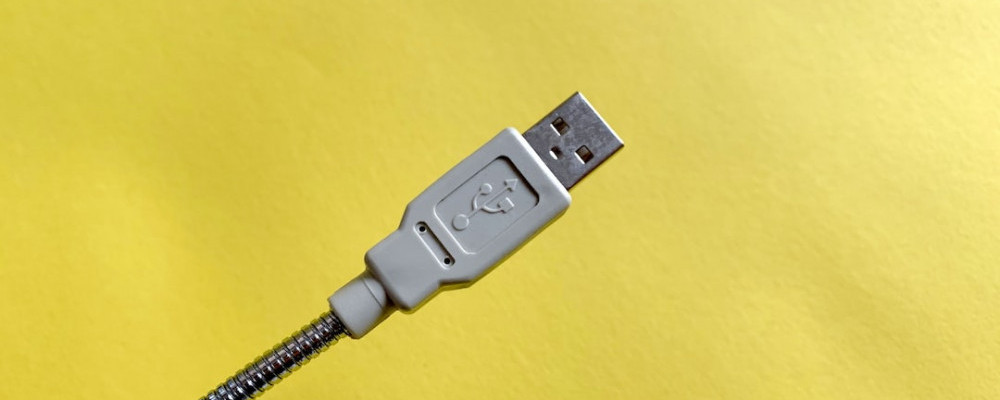
You can record your vinyl records to your computer via a USB connection.
Bluetooth connection:
Using a Bluetooth connection your turntable can be wirelessly connected over short distances to speakers or headphones. The latest iteration of Bluetooth technology is Bluetooth 5.0.
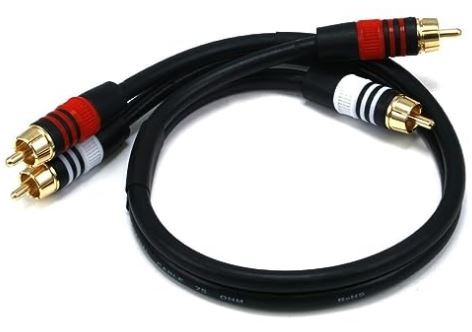
RCA (Radio Corporation America) cable:
Still the standard connection for wired connection of your turntable to your amplifier or speakers. White for the left channel and red for the right channel.
Disclaimer:
In writing this set of definitions, I have constantly added terms as more have occurred to me. It may be that there are aspects of turntable terminology that I have neglected to include. If anything occurs to you, please feel free to add it in the comments below.
If you have a different understanding of anything I have written here, again, please say so in the comments below.
